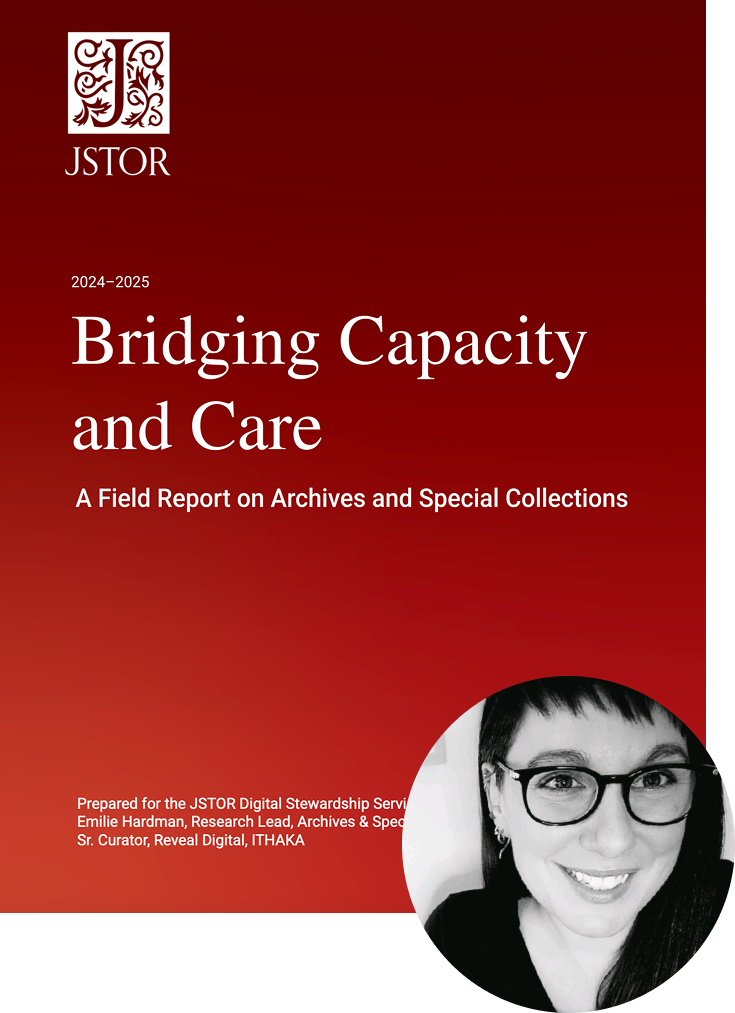
What does it mean to be a good steward of archives in a time of constrained resources, digital transformation, and growing ethical complexity?
Bridging Capacity and Care: A Field Report on Archives and Special Collections is a field report grounded in the lived experiences of those answering that question every day. This report draws on over a year of research—including site visits, interviews, and observational sessions—with more than 280 library and archival experts across 24 institutions on two continents. From enduring backlogs to the promise of post-custodial models, the report captures the evolving pressures, aspirations, and resilience of those working in archives and special collections today.
“Special collections and archives have a rare capacity to bridge the past and present. They are not merely custodians of the past; they are active participants in shaping the future of scholarship.”
Shared realities and long-term responsibilities
Here are some of the key takeaways shared by archivists and special collections professionals in the full report.
- Stewardship today is a balancing act. Practitioners are navigating ethical responsibilities, institutional pressures, and limited resources—often all at once.
- Backlogs are more than a processing issue—they shape scholarship. What remains unprocessed influences what can be discovered, taught, and researched.
- Metadata is the foundation—and the bottleneck. Description work is essential to access, but constrained by time, staffing, and outdated systems.
- Labor is both visible and invisible. The intellectual, emotional, and technical work behind stewardship is often undervalued or unrecognized.
- Community-centered work is reshaping the field. From reparative description to post-custodial models, archivists are redefining what ethical practice looks like.
- The archival community is redefining success. Traditional metrics are giving way to values like care, collaboration, and long-term impact.
Turning insights into solutions
Bridging Capacity and Care directly informed the development of JSTOR Digital Stewardship Services, our new initiative designed to meet the real, systemic challenges surfaced by practitioners across the field. From metadata bottlenecks and digital fragmentation to the need for scalable, community-responsive tools, this service was shaped in partnership with archivists and librarians, and grounded in care, collaboration, and sustainability.